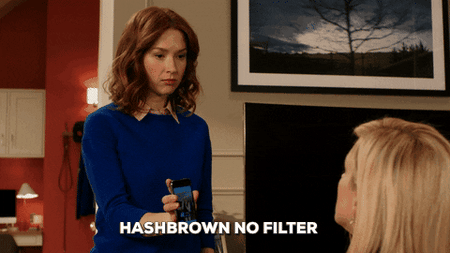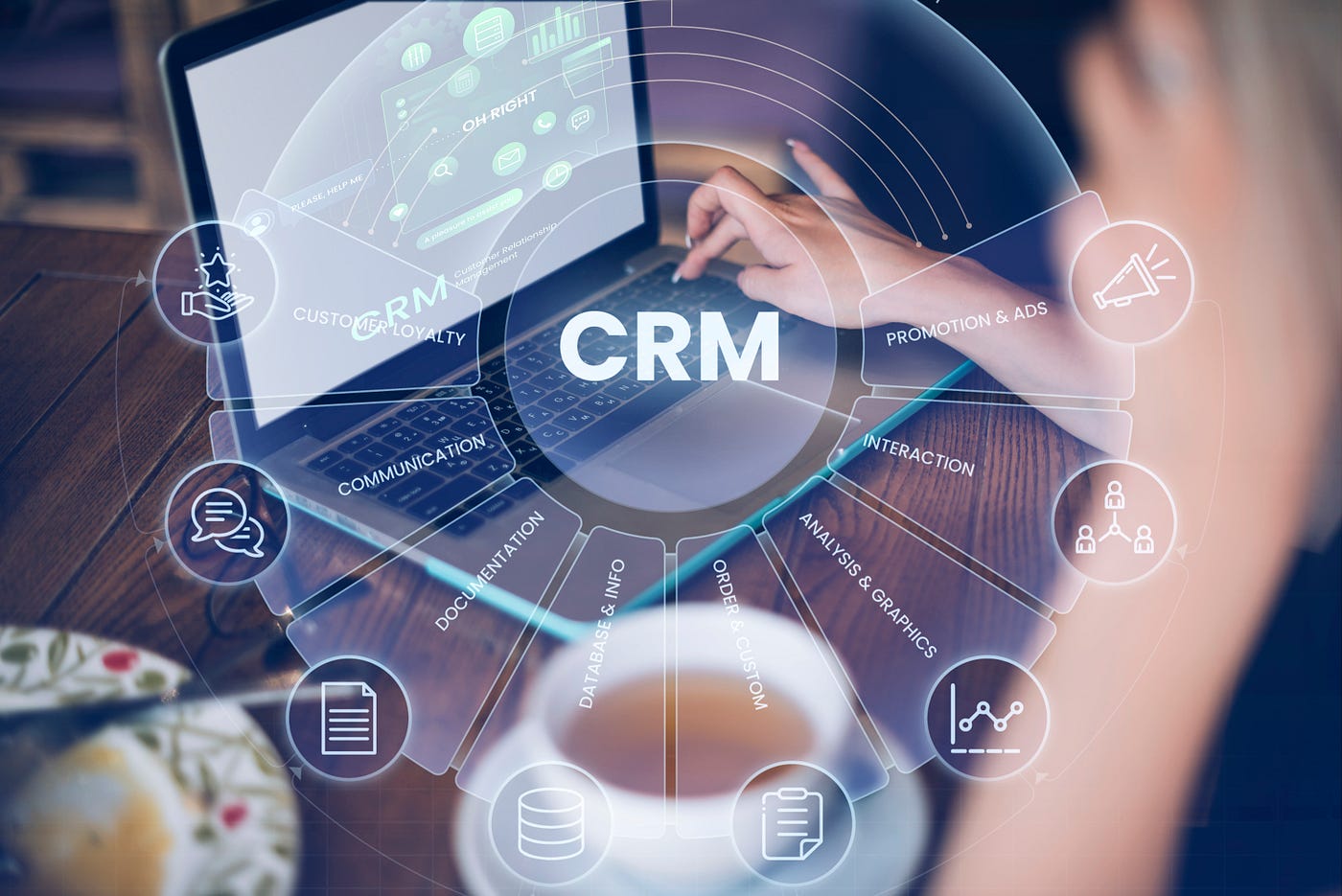The Virtual Event Marketing Strategy You Need Today

Table of Contents
If you’re investing a couple of months out of your life, and potentially thousands of dollars, to plan a virtual event, shouldn’t you have a virtual event marketing strategy to go with it? Because if your strategy is to finish getting your virtual event registration and landing page and speakers and other details set, and then launch it without a marketing plan in place… that’s not a strategy at all.
A strategy is our method for achieving a desired outcome. We spent an entire episode talking about how important it is know our Why, what our desired outcome is for our virtual event, so that we’d know what the goal is. And if we’re going to hit that goal, we’re going to need a plan that encompasses not only the virtual event itself, but how we’re going to promote that event to our audience and beyond our audience to drive registrations and ensure that we host a Sold Out Summit.
What does a virtual event marketing strategy look like? What tactics should we include? How much time should we anticipate needing for preparation and promotion?
That’s what we’re covering in today’s episode of The Virtual Event Strategist podcast.

It was December 2014 and I was the Chief Marketing Officer at SiteSell. We were in the midst of our big annual sale and marketing campaign. Every year previous, the company had put on a huge Buy One Get One sale on their core subscription service, with the idea being, new or existing customers would buy a membership and gift one to a friend or family member. When I’d come on as CMO, one of the first conclusions I came to was that gifting someone else a business subscription was… unusual. Instead, for the first time ever, I built a sales campaign for the company that offered a discount, and targeted new customers.
The campaign launched earlier than usual too, during Black Friday in November. During the first week of December, the CEO called me on Skype and said, “Mike, I think we need more blog content to promote this sale. I want you to start writing and publishing blog posts.”
Blog posts, plural. Uh… what did you have in mind, sir? I asked.
He then went on to outline his idea of a series of five or six blog articles sharing how successful individual customers had been with our service. Essentially mini case studies. And it was a great idea… but we were already halfway through this campaign. How was I supposed to pull this off?
I got off the Skype call, started a new document, and just started writing whatever came to mind. Tap, tap, tapping away on my keyboard.
The fact is, even if our virtual event is 100% free, not everyone is going to register and show up.
People need to know that the event is happening. They need to see the value in it for themselves and be interested in the content and activity. And they have to be available, and have the means to attend.
And by people, I mean your target audience, not just anyone. Your event is designed from the ground up to speak to your ideal customer and help them with their most pressing issues.
It’s a common joke among marketers to laugh at the now-famous line from the book Shoeless Joe which was later turned into the film Field of Dreams, where whispers in a corn field encourage the farmer, Ray, by saying, “If you built it, he will come.” While that might have applied to an Iowa cornfield, it most certainly does not apply to your virtual event.
It’s not enough to build it. You have to market it. And I often equate launching a virtual event to launching a new startup business because that launch should incorporate all available marketing channels and tactics. From social media to email marketing, and everything in between. And because all of these channels can and should be tapped, it’s important to think through those elements and determine in advance what you want to do, what assets you need, and when everything is going to happen.
You need to create opportunities for your audience to learn about and get excited about your event, and make sure your event is woven into the fabric of your online conversations throughout your entire promotional period. You need to build buzz and extend curiosity gaps. And above all else, you need to reach audiences beyond those who are already following you on social media.
You’ll need to think like a marketer, even if you aren’t one.
So that’s what we’re covering, not only in this episode, but this entire season of The Virtual Event Strategist podcast!
By the end of this episode, you’ll have a firm understanding of what to include within your virtual event marketing strategy, which channels to leverage and when, and how to go about putting all of the asset creation, messaging, and timing into a structured plan that you and your team can use as a playbook.
And then over the next nine episodes, we’re going to cover specific aspects of the marketing plan so that this is more than me just telling you, hey, you need to employ influencer marketing. I’m going to tell you exactly how. We’re going to cover video marketing, social media marketing, email marketing, influencer marketing, partners & sponsors, website and content marketing, earned & paid media marketing, audience marketing and UGC. And in our tenth and final episode of the season, we’re going to talk about analytics and reporting so that you know how to measure the results of all of these tactics and learn which ones to double-down on.
How To Build A Virtual Event Marketing Strategy
Now, if you’ve already listened to episodes one through four of the podcast, then you’ve got a head start. If you haven’t yet, that’s your homework assignment. Those episodes form the core of building out your overall virtual event plan and, unsurprisingly, the decisions and ideas you document there help to inform and guide your virtual event marketing as well.
While your marketing plan may ultimately live in Asana or similar project management tool that will help you organize, prioritize, and assign tasks and subtasks, initially just start with a Google Doc. Begin adding the details you already know, including what your overall goals are, who you’re targeting, and the virtual event specifics you have already determined such as dates and times, format, speakers, and so on.
Next, write out the core message for your virtual event. Why should your target audience register? Be specific, and focus on the actual benefits and takeaways they’ll gain. This will be a challenging and potentially time-consuming part of the process for many of you, and that’s OK! It’s good to really sit on this part of the process and let your mind wrestle with it. Don’t cheat and list a bunch of features of your event – no one else cares how many speakers or other attendees are going to be there. They want to know what’s in it for them. So tell them. If possible, you’ll want to show them, too. We’ll get to that later.
This message is text that you’re going to draw from for your landing pages, social copy, emails, video scripts, and more. Each time you need to create something new about your virtual event, you’ll be able to take from this and adapt it, so it’s best if this initial marketing message is lengthy. If all you write at this point is a couple of sentences, each time you need to create an email or an article, this document will be exactly no help. It’s fine if the text here isn’t polished and edited, and it’s also OK if it’s primarily intended for internal audiences. Perhaps this is the start of a marketing brief that you plan to share with your CMO and key stakeholders. If so, that’s great. Give them a summary of what the event is about, and then go into the details of how and why it’s going to appeal to your target audience.
This initial section should include a branded hashtag for the event, as well as a few key hashtags that might be included in social posts. Also, list all of your speakers and their Twitter handles, as well as any prominent brands that are represented or sponsoring the event.
Finally, include your main event website address and note the UTM parameters and naming convention you want to use. That’s something we’ll spend more time on in episode ten of this season, but you’ll make your reporting life easier and more accurate if you decide in advance what your campaign, medium and source tags are going to be and make sure they’re used correctly with every link that’s shared out.
All of this information should be on the first page or two of your virtual event marketing plan. You and your team will reference these bits on a regular basis, both while you’re building out the rest of the plan, and throughout the promotion period when certain pieces are needed. So it’s great to have all of this information handy.
Key Virtual Event Marketing Considerations
Once you have your event information and your messaging nailed, you’re ready to start considering some of your virtual event marketing details. These include the channels you plan to use, the timing of your promotions, the assets you’ll need, and the team and resources you have available to help.
Marketing Channels
First up is marketing channels, and when people think about creating a marketing plan for a virtual event, this is what they think of. Sending tweets and paying for ads. And those are definitely great examples. Fortunately, you now know to start by thinking about and documenting your virtual event marketing message so that everything else you do is value-driven and consistent. You know who your target audience is so you have a sense of their preferred channels, and now you know the language and benefits to call out that will resonate with them.
Furthermore, by considering channels as a part of this larger virtual event marketing strategy, there are additional aspects we’re going to get into next that will help make your channel utilization more effective.
The next eight episodes will dive into the details for how best to use most of the channels available to you, but the key at this point is to consider and list out all of the channels you can leverage so that you can begin to plan activity accordingly. I recommend that you have some paper out now to start taking notes. If you’re driving or multitasking in some way, that’s cool, just make sure you download and re-listen to this episode when you have time to brainstorm.
List all of your social profiles and available networks. If there’s a prominent network that you don’t have a profile on (TikTok perhaps), make note of that too. You’re going to want to pull every lever that you can.
Most small to medium businesses likely have a single email distribution list and service, such as MailChimp or HubSpot. Larger organizations may have multiple lists and segments and options. This is the time to talk to your team and make sure you’re aware of what your options are. Perhaps there’s a monthly newsletter that goes out to the entire organization that you can tap (if you plan around their publishing deadlines), as well as a couple of smaller but highly relevant segments that you can send dedicated emails to. I’ll cover this in far more detail in our fourth episode this season.
Other channels will include content and website properties. Again, for many businesses this will be a single company website and blog, but larger organizations may have multiple properties. You might have subsidiaries, products or services with their own websites, communities you own, and more. It’s important to think about how each property could potentially be leveraged, so be sure to list them all.
Do you have an affiliate program or partner program? Are you in good rapport with key influencers in your industry? Who are the key influencers in your industry, whether you have a relationship with them or not? And who are the other brands in your space that aren’t competitors, with whom you might partner on your event? List them too.
Finally, list out both paid and earned media. For paid, hopefully you have already been running ads of some kind and already know which channels you can tap immediately. But also think about the channels you can utilize that you haven’t tried before. LinkedIn ads? TikTok? Sponsored newsletters? This might be a list that you need to do some digging and add to later, and that’s OK. List out what you know and create a task for yourself to revisit this one.
Take a beat now and look through the list you’ve drawn up. What ideas are you started to get in terms of actual marketing tactics? If your mind is already racing ahead to live streams you can do, articles you can write, and ad concepts you can pitch to your team, that’s awesome! Write them all down.
When I’m working with our Director of Communications at Agorapulse, Stephanie Liu, we’ll go through this same exercise for any marketing campaign we’re working on and as we add each channel to the list as a bullet, we’ll insert sub bullets for specific ideas and tactics. For instance, under Social Media, we might have a bullet for live streams, and under that, a numbered list of key speakers we want to bring on as guests to hype up their sessions.
Within short order, you’ll have an extensive list of both channels and the specific marketing tactics you want to employ. But now it’s time to think about timing.
Timing
Imagine for a moment if you had taken the time to craft a social post about your event that tags each of your speakers for added engagement and visibility. You’re going to do three live stream video interviews with upcoming speakers. You also have a promotional video that’s super exciting. You have two testimonials from attendees of your last event that you want to share, and you also have a short video segment from a past event session that will give attendees a taste of what to expect. That’s eight social posts, right?
Would you post all of those at once on a Facebook Page? Of course not, you’d want to spread those out over time.
That’s the first key determination once you’ve mapped out all of the channels you’re going to leverage: when you’re going to leverage them.
If you’re a visual or kinesthetic person, you might get out an actual calendar and start putting sticky notes on each day between Launch and your actual event, and begin pencilling in specific activities for each day.
By the way, you’re going to need a Launch Date. That’s the official day that full promotion of your event begins and should be marked by a flurry of coordinated activity spanning all available channels. And this date should be at least 4 weeks prior to your event date. There are a couple more considerations we’ll get to in a moment which can impact your launch date, so it’s OK if you don’t have a specific date identified yet. But you soon will and when you do, add that to your virtual event marketing brief on page one of the plan.
Personally, I’m a digital guy so I like writing out my launch plan and timing. I may literally list out each day and date between launch and live and put specific details there as to what’s going on. This works particularly well when you have existing scheduled channel activity, like email newsletters, that you can take advantage of. If you know the first Wednesday of every month is when the monthly newsletter goes out, you can note that and visualize how that is timed along with everything else you’re doing.
If it’s a four week marketing campaign, that’s twenty business days of activities that you can have going on, and it’s definitely a good idea to make sure there’s something happening on every day. Not every channel needs to be active every day, just something somewhere. Monday might be a live stream, while Tuesday might be sharing of a testimonial. Wednesday might be an email, while Thursday might be a premiere of a clip from a past summit session and Friday is a new blog post. You get the idea. By mapping out the specific days that you have available, and the specific tactics you can employ, you can spread them out and coordinate them. A planned newsletter can promote your event as well as the live stream you have planned later in the week where you’ll reveal a surprise keynote speaker.
This will also give you the chance to make sure you’re aware of holidays, events, seasons, or even internal activities that could be happening during your launch window. These might be dates to avoid or potential opportunities, depending on the significance of the date and your message.
Asset Creation
The second key determination once you know what channels you’re going to leverage is the assets you’ll need!
And this is going to end up being a much longer list than you ever anticipated.
First, there’s graphics for your announcement, and you’ll likely want that graphic in landscape, square and portrait sizes so that you can post it to all social networks. You should also add a vertical video so that you can leverage Stories, Shorts, TikTok and Pinterest. Plus various sizes needed for ads.
At the same time, it might be good to change out all of your social profile banners or cover photos – that’s Facebook, LinkedIn, Twitter and YouTube, so that anyone visiting your page or profile will learn about your event prominently.
Every live stream, blog post, email, and subsequent social posts will likely need graphics. And if you wish to create LinkedIn or Facebook Events, those need graphics too.
Every speaker will need a full set of graphics and those should be provided to them in advance, as well as partners and sponsors. They won’t all use them of course, but there’s no way to know for sure who will or won’t in advance, so it’s best to work up a template and churn out sets for everyone just in case.
And don’t forget that your virtual event platform will require custom graphics as well!
If you’re going to share snippets from past summit sessions or any other video, that will need to be created and edited in advance.
Landing pages, blog posts, emails, press releases, ads, social posts… all of these assets can and should be drafted in advance, along with additional versions of promotional copy for every speaker and partner. Again, we don’t know which ones will promote but I promise you this: when you make it easy for speakers and sponsors to share prepared copy along with great images, they’re far more likely to do it.
If your company isn’t in the habit of building out full marketing campaigns and doesn’t have the experience to quickly determine how much time all of this will take, give yourself extra time to get it done. It doesn’t have to be a stressful experience. I know at Agorapulse, we typically bang out this size of campaign in 4 weeks. This is important to know because that means that I can plan and launch an entire virtual summit in 12 weeks total. I need 3 – 4 weeks of initial planning and speaker recruitment, then 4 weeks for my team to build out all of the assets we’ll need, then 4 weeks to promote everywhere.
Team
Of course, it helps that I have a team. Most large companies have people on staff who are responsible for social media, email, advertising, and design. While these people may not report to you directly, they’re part of your team if they can help you with specific aspects of your virtual event marketing. So during your initial planning phase, reach out to them or their manager, depending on how your company is structured. Let them know what you’re planning, give them opportunities to ask questions and prepare, and share with them your proposed timing.
The beauty of this approach is not that they’re doing the work for you, but that these are professionals lending their incredible expertise and perspective.
The first few virtual summits that I planned were total one-man shows. And while I got it done, the quality of the events really took off when I was able to tap our design team. They’re not just doing the graphics for me, they’re designing the event in a magnificent way.








But what if that’s not you? What if you don’t have a team?
First, listen to episode four of season one of the podcast if you haven’t already. That entire episode is devoted to helping you rally resources to help with your virtual event, even if you don’t have employees or co-workers to lean on. I share a number of ideas on how friends and family can help you in other ways, freeing up your time to plan and promote your virtual event.
Second, consider leaning on time-saving tools that will make it seem like you’re an army of hundreds rather than a solopreneur. I will share links to all of these tools in the show notes for you.
Jasper is an incredible tool for building out all of the copy that you’re going to need to generate for your event. Simply tell Jasper some of your event details and watch as it gives you option after option of terrific snippets of text, according to whatever marketing copy framework you’d like to employ. My favorite is PAS – Problem, Agitate, Solution – as it piques the reader’s attention with a problem they can relate to, then guides them toward a solution represented by your event. I’ll share a link to a complete guide to using Jasper for both long and short-form content.
Live Video is your next tool, and I recommend you learn the in’s and out’s of Ecamm to really harness the power of video and interviews. A video-first approach to marketing your virtual event is superior because it creates so many opportunities for engagement, reach, and asset creation, that any other approach cannot hope to match. Every time you bring one of your upcoming speakers or another influencer onto a live video, you create opportunities for them to share and extend your reach into their audience, and afterwards, gain a terrific video which you can repurpose dozens of ways.
If you haven’t hosted a live video interview before, I recommend checking out this Video Script Maker that gives you a template for your live interview, complete with intros and a full run of show.
Which leads us to the next essential tool, Descript. Once you’ve aired and downloaded your live video, pull it into Descript to transcribe it, edit it, and start turning that individual piece of video content into blog posts, emails, video snippets, a podcast, ebook and more.
And once you’re creating all of that content – which, by the way, you can absolutely do yourself or hire an inexpensive VA to help – you can use Agorapulse to make sure that those snippets, quotes and other pieces of promotional content are being scheduled out to all of your social profiles throughout your virtual event marketing campaign.
Once you’ve made a note of those tools, the team that can help you, and outlined all of your available channels, you’re well on your way toward having a fully developed virtual event marketing strategy in place!
And we’ve covered a lot already, haven’t we!? You now know how important it is to take the time to build out this marketing plan, identify the channels, and list out all assets that you’re going to need to have in place. Hopefully as you’ve been listening you’ve been tap, tap, tapping on your keyboard everything that’s been coming to mind.
Just like I was tap, tap, tapping back in 2014 when I was suddenly asked to add half a dozen new blog posts to our marketing campaign, midway through the sale.
But the thing is, I wasn’t worried or stressed. In fact, I actually took my CEO’s idea and doubled it with even more blog posts than he’d originally suggested! As I thought about the idea and the timing of it, happening during the Christmas Season, and knowing we had dozens of great customer success stories we could draw from, I actually mapped out twelve new blog post ideas to have a Twelve Days of Christmas theme and countdown through to the end of the sale.
How’d I do it?
Well, that speaks to the final underlying benefit to having a virtual event marketing plan in place. The freedom to improvise and do more during your launch, if the need or opportunity arises.
Too often, businesses find themselves building a marketing campaign while they’re actually in the midst of launching it, which results in assets being created just in time. If you’re busy writing blog posts and creating graphics that are supposed to go out tomorrow, you have time for nothing else. You cannot keep an eye on your analytics to see what’s working, and you certainly don’t have time for other people’s crazy ideas.
But, if you’ve planned your campaign in advance, and created the vast majority of your assets before you needed them, then you’ll be less stressed throughout your campaign and perhaps even have time to add improvements and improvisations.
While we’ll be going into far more detail about all of these marketing strategies over the rest of this season, what do you do if your virtual event is coming up fast and you don’t have time to wait for these episodes to drop or sift through a dozen blog posts and articles? What if you need your virtual event strategy mapped out right now so that you can make sure it’s a success?
That’s why I offer a VIP Strategy Day. We’ll book the next available Saturday so that we’re free from distractions and commitments and I’ll guide you through the process of building out your entire virtual event plan. We’ll work out your Why and Audience and then get into all of the details for your online summit or hybrid event so that you will walk into Monday feeling confident and prepared and launch a Sold Out Summit.
If you’re ready to be a rock star virtual event planner for your business, let’s talk.
In our next episode, we’re starting to unpack some of the specific tactics you’re going to include in your virtual event marketing strategy. While there are elements of video marketing that overlap social media, email, and paid advertising, we’re going to start the detail part of the series by talking about video first and exclusively because as we already mentioned, video is superior. With a terrific video strategy in place, all of your other tactics will be incredibly more effective.
So be sure to subscribe so you don’t miss these important episodes!
Talk to you soon.








